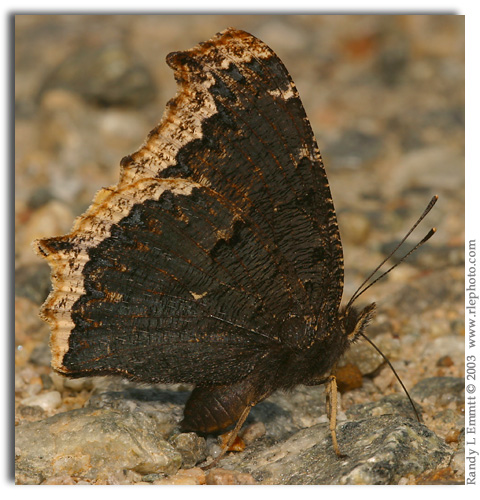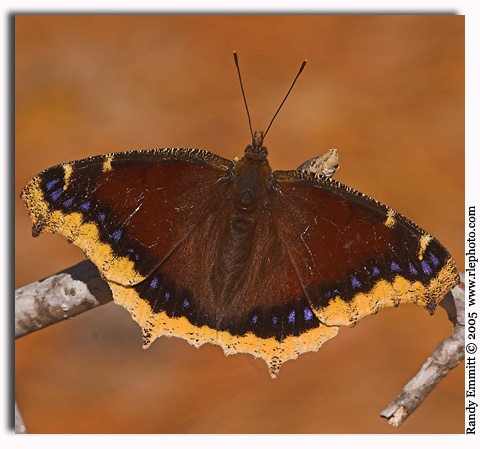Nymphalis antiopa
Size:
Wingspan is
2 - 2 3/8 inches.
Similar Species:
None.
Habitat:
Woodlands, roadsides and adjacent open areas, parks, orchards and yards.
Range/Abundance:
Common in most of
the region. Uncommon in the coastal plain areas.

Flight Period:
Adults fly all year in the region as it overwinters as an adult. In winter,
found only during warming spells. This species is most active during spring
and fall.
Larval Host Plants:
Willows including Black Willow Salix nigra, Weeping Willow S.
babylonica American Elm Ulmus americana, hackberry Celtis
spp., Quaking Aspen Populus tremuloides and Big-toothed Aspen
P. grandidentata.
Comments:
This butterfly has excellent camouflage and just about disappears when
perched on tree bark. Yet the upper side is very colorful and hard to
miss.
Mourning Cloaks are the longest lived butterfly with a life span up to
10 months. They rarely nectar and tend be found on tree sap, carrion and
rotten fruit. It is known for hill topping and keeping territories which
they defend very strongly. May is a good month to find them fresh and
in abundance. This is one butterfly you will not find in the heat of summer.
The top photo was taken in Caswell Co., NC on June 10, 2003. The second photo was taken at Eno River State Park (Few's Ford) in Orange Co., NC on May 22, 2004. The bottom photo was taken at the Little River Regional Park and Natural Area in Durham Co., NC on February 22, 2005.


